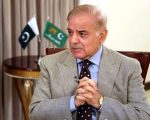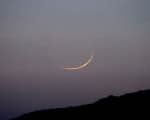The dark economic reality is mischievously starring in the face of an enthusiastic and upbeat-looking new government in Islamabad, led by Pakistan Tehreek-e Insaaf.
That the party and its celebrity leadership had to eat their words about the begging bowl and all that – though extremely embarrassing – is certainly a thing of the past, seen today. What becomes more pertinent today is the continuing uncertainty about the days to come, even if the bowl is filled for the moment.
The delegation of the International Monetary Fund (IMF) will reach Pakistan on November 7 to start negotiations on a new ‘programme’ that Islamabad has formally requested in the recently concluded annual meetings of the Bretton Woods Institutions (IMF, and the World Bank) held in Bali, Indonesia.
Actual size of the bailout is yet to be seen, with figures of anything between $ 7.5 billion to 15 billion doing rounds. And how front-loaded it would actually be – i.e., how much of it Pakistan will get as the first tranche, which is usually the biggest one, at times half of the entire package – would tell us how much of the burden of Pakistan’s forex needs can it bear.
It however will hardly be any bigger than what is required for just averting a default-like situation. The money will come, and would go as soon as it comes, towards what is already due. And even if it will come, remains linked to how the decision-makers in Washington D.C would decide to go about it. Pakistani FM can find solace in the numbers that the US has only 16.5 % voting rights but so far the tide flows towards the direction America points to, as far as the Fund’s dollars are concerned.
Money received, bills paid, let us suppose so. Then what’s next? IMF dollars never come without a list of things to do. What we have seen in the shape of gas and power rates’ hikes in past few weeks, along with the slashing of PSDP by a quarter, are the things that governments do, all across the globe, to pre-appease the Fund before extending their bowls towards the lender of the last resort.
More follows once the package is signed. This is a familiar scene for a country that has already gone to the IMF not less than 18 times, in the past. And now the finance minister is warning of tougher times to come. Things get worse before they get better, is what we may make of it. But will it actually be so? Will this IMF Programme that Pakistan is approaching in weeks ahead be any better for the national economy in any sustainable way?
A further raise in power tariff, in addition to pending upward revision in the prices of petroleum products, with-held for the petty politics of by-election (though going in vain, yet) would mean further increasing the cost of living and doing business. The stock and forex markets, as well as creeping inflation, are not the good signs for economic activity to thrive in any part of the world.
Seen with the cuts that the government has already made in the revised development budget for the ongoing fiscal – bringing PSDP to just over Rs. 700 billion for an initially budgeted over Rs. 1000 – means that growth momentum will slow-down significantly.
We first heard from the Asian Development Bank that growth may be adjusting to around 4.8% in 2018-19, but now some projections are as depressingly low as 3%. That does not suit any government’s agenda of poverty reduction and employment provision in the short, possibly even medium, term. The nascent government has already tasted the impact of such ‘tougher decisions’ in the results of October 14 by-election; luckily it is not faced with any electoral exercise in the near future, so a sigh of relief for the economic mangers. They can experiment some more.
The opinion that following the IMF’s usual prescription (raising revenues and incomes on the one hand and cutting expenses including those for the development and subsidies) may be in Pakistan’s, and for that matter any country’s, own interest does carry some weight. But the real progress will be gauged by how the government fares in case of broadening the tax base – especially when it comes to the lot of its own big-and-heavy leaders.
Politicization of the same will be dangerous; and not so pleasantly, the government so far has seemed focused more on optics than on substance. Besides taxes, rationalization of expenditure will have to be dealt with, seriously. And how far can we really go in eliminating the subsidies would become a pertinent question.
Good to note that the finance minister has already made it clear that the country’s defence needs would not be compromised.
A disturbing sign regrading this coming IMF programme is the US’ insistence on getting hold of the details of China-Pakistan Economic Corridor (CPEC) agreements and financing; so did signal the IMF guys, too. Transparency indeed is what everybody would demand, but is it all about transparency or – in the backdrop of the prevailing global scenario – a quest for convenient interpretations, and thus corresponding labeling, rather bashing, of the CPEC in particular and the Belt and Road Initiative (BRI) in general.
For any set of reforms to succeed, the role of government machinery is pivotal. Some of the ministers trying to have their own way with the bureaucracy does not bode well.
It is very hard for a government to convince the private sector to come forward and invest when the public machinery itself is adjusted to the belt-tightening mode. The 5 million housing units’ initiative will become a test case in this environment.
More loans? Hard to avoid: even before IMF delegation arrives, the government would have borrowed a few hundred billions of rupees, though short-term.
Let us hope for the good times to prevail, at last, but it seems that the tougher times may actually be longer than what we are being convinced to believe in.














